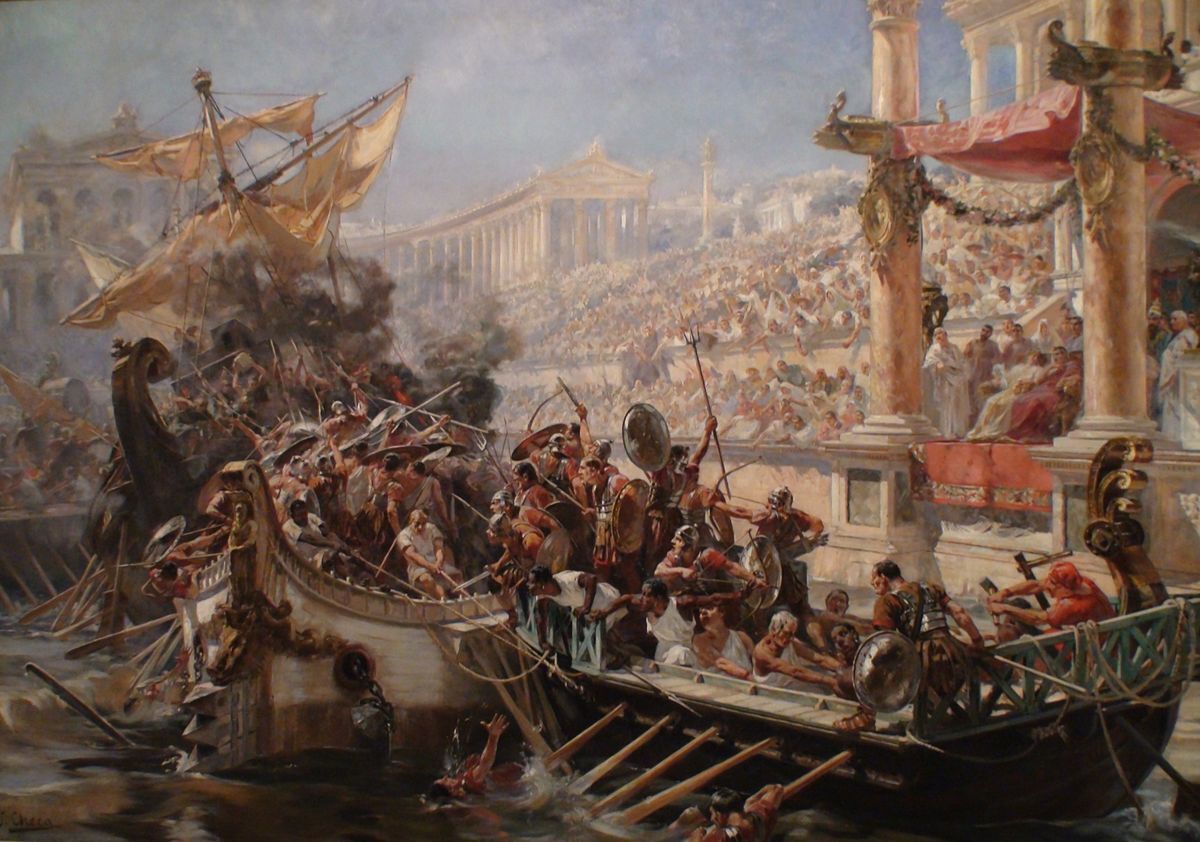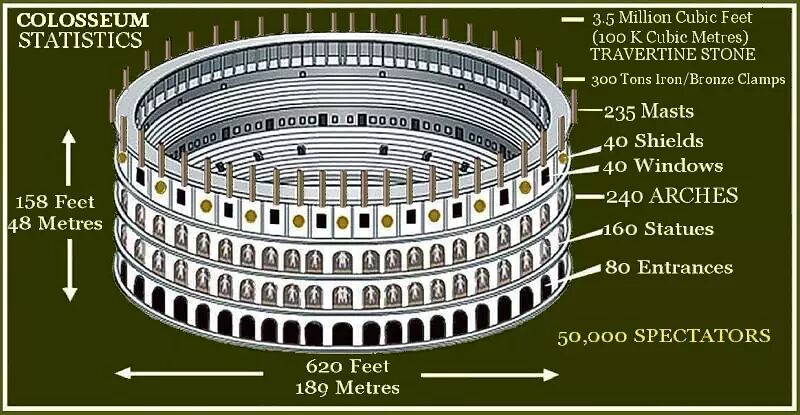The Colosseum, one of the most iconic landmarks of ancient Rome, has captivated the world for centuries. Its grandeur and history are legendary, yet many mysteries still surround this remarkable structure. With its massive stone walls and towering arches, the Coliseum stands as a testament to the engineering prowess and cultural significance of the Roman Empire.
There are various fascinating aspects of the Coliseum that spark curiosity. For instance, some historical accounts suggest the possibility of naval battles being staged within its confines, a feat that seems challenging given the arena’s size and infrastructure. The purpose of several architectural elements, like the ring of stone pillars, also remains a subject of debate among scholars. These mysteries only add to the allure of this ancient amphitheater, making it a subject of endless study and admiration.
Key Takeaways
- The Coliseum is a symbol of Roman architectural achievements.
- Naval battles in the Coliseum are debated due to space constraints.
- The structure’s full capacity and naming origins remain uncertain.
Origins of the Ancient Amphitheater
The Coliseum is one of the most recognizable buildings from ancient Rome. People have seen it in movies and video games, and it has even appeared on Olympic medals and pizza boxes. For six centuries, artists have painted, engraved, and drawn it. Millions of tourists visit its ruins every year, yet there are many things people still don’t know about this ancient amphitheater, especially its events involving water.
Naval battles, or “naumachiae,” were costly and brutal Roman spectacles. Emperor Claudius once held a naumachia on Fucine Lake, using 100 ships and involving 19,000 fighters, all consisting of criminals and prisoners of war. These fights were expected to end in death. In Rome, Emperor Augustus created a large basin for naval battles, once hosting a fight with 30 large ships, involving 3,000 fully armed soldiers and thousands of rowers. Later emperors used this basin for their battles, and Nero ran two in a temporary wooden amphitheater.
Both Emperors Titus and Domitian are believed to have hosted naval battles in the Coliseum. According to the poet Martial, the inaugural games for the Coliseum, held by Titus, included a scene where the arena was filled with water. There are accounts of a naval battle reenacting the battle of the Sicilian war and displays of swimming animals. Scholars, however, doubt that such events could occur within the tight confines of the Coliseum. Would only small boats have fit? The pipes installed seem insufficient for filling it with water quickly, and drainage would have been a huge task.
There are theories that suggest the Emperors staged such naval events in nearby places instead, often confusing them with events at the Coliseum. Some argue that the Coliseum once had a simpler tunnel system that could have been used for these events before more complex developments occurred. The waterproof lining found in the hypogeum might hint at this.
Other scholars who trust historical records suggest that the entire structure was designed for potential water events. Nevertheless, without concrete evidence, this remains a topic of debate. Even with further discoveries, the full extent of these aquatic spectacles at the Coliseum might never be understood, reflecting just one of the many mysteries that surround this ancient wonder.
Sea Battles in the Ancient Amphitheater
Old-Time Water Shows
The Coliseum, a remarkable symbol of Rome, is famous for its grand spectacles. Questions still arise about whether it hosted naval combat shows called “naumachiae.” These dramatic fights often involved many ships and fighters, often prisoners or captives, battling to the end. Despite the Coliseum’s fame, it’s unclear if its space was truly used for these kinds of games.

Under the Arena and Water Events
Beneath the Coliseum’s floor is the hypogeum, a network of tunnels and chambers. Some believe this area was once a simple space that had wooden floors for easy water drainage, hinting it might have been used for naval shows. Some argue that this design suggests it could be partly flooded, though it seems unlikely it could hold the massive amounts of water needed for large-scale battles.
Expert Discussions About Water Battles
Experts continue to discuss if the Coliseum truly hosted naumachiae, or if historical accounts have been misinterpreted. Some emperors held water battles elsewhere, suggesting mix-ups in historical stories. Yet, for those trusting old texts, the possibility remains that the Coliseum’s design initially allowed for water events, although the logistics remain debated and somewhat mysterious.
Current Insights on the Grand Roman Arena
Mysterious Clues
The famous Roman Arena, often highlighted in popular culture, is surrounded by questions that continue to intrigue scholars. One significant mystery involves the historical events known as naumachiae, or naval battles. These were grand and deadly spectacles involving ships and numerous combatants. While some ancient writings suggest such battles occurred in the arena, many historians question the practicality of this. The physical structure of the arena, with its intricate underground chambers, would likely make staging large-scale naval battles a daunting task.
Certain features, such as waterproof coatings on the hypogeum, suggest they may have planned for flooding the arena. Yet, the existing drainage system could not handle the volume quickly enough. The most practical explanation might be a misinterpretation of records that confuse these events with battles staged on nearby lakes.
The Awnings and Stone Markers
Around the perimeter of the arena were stone markers, originally thought to hold the main protective awnings. These awnings provided shade to the audience using tall posts to suspend canvas sheets. While these stone markers might have been expected to support significant tension, skeptics argue they were not anchored deeply enough.
More likely, they served as crowd control, guiding the flow of people through the many entrances. Understanding how these elements were constructed and used remains elusive, with many traditional views now being reconsidered in light of new interpretations.
These discoveries reflect ongoing efforts to unravel the mysteries of this iconic ancient structure. While the arena’s history is continually studied, many questions about its original use and capacity are still open for debate.
Names and Meaning in Context
Where the Term ‘Coliseum’ Comes From
Many people are unsure where the name “Coliseum” really comes from. The Romans originally called it “The Amphitheater.” However, there’s a theory that it got its current name because of a massive statue of Nero, which was later linked to the sun god, that stood next to it. Some say the name “Coliseum” transferred to the amphitheater after the statue disappeared in the 10th century. This is still debated, as it’s possible the name was always linked to the building itself.
The Meaning of the Coliseum’s Presence in Culture
The Coliseum is a symbol of ancient Rome and is recognized worldwide. It appears in movies, video games, and has even been placed on items like Olympic medals and pizza boxes. The structure has fascinated artists, historians, and tourists for centuries, drawing millions to its ruins each year. Despite its fame, many mysteries about the Coliseum remain, such as whether naval battles were ever held there. These unresolved questions add to its enduring intrigue and cultural importance.
Space and Structure

Visitor Capacity
The ancient amphitheater once known as the Coliseum is still a mystery when it comes to its seating capacity. Although a 4th-century document provides a figure, it is quite hard to imagine that the Coliseum could accommodate 87,000 seats as specified. Instead, due to the structure consisting of 45 to 50 rows of stone seats and additional wooden seating, scholars often suggest a different estimate. If each person had about 45 centimeters of space, the number could range from 40,000 to 45,000. Some even suggest a possibility of fitting up to 70,000 due to the measurements and the steepness of seating rows. All these numbers remain uncertain, as the original seating was removed over time, leaving only a small reconstructed section from the 20th century.
Architectural Adjustments
There are diverse theories about the structural elements of the Coliseum, including the purpose of the obstacles known as ballards. Situated around the perimeter, they may have served as crowd control barriers rather than part of the awning system that provided shade. The ropes used to hold up the awnings would likely have created issues in using these posts effectively for tension. Additionally, the underground hypogeum presents another architectural challenge. Initially, its tunnels might have been intended for more than one use, potentially involving temporary removal for special aquatic events. The waterproof mortar indicates a possibility that builders envisioned portions of the area could be submerged, although logistics of draining remain questionable.
